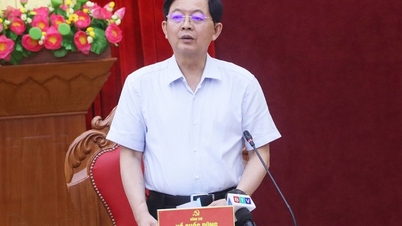As one of the countries with the most developed information technology in the world, India has been implementing many policies to promote digitalization in all fields, including the Digital India Initiative. This is a program initiated by the Government of India since 2015, with the aim of spreading the wave of technology to improve people's participation in the development of the Indian economy.
In particular, the government has just announced 4 main pillars to continue promoting the implementation of the Digital India Initiative including: Lower device prices; Ensuring nationwide digital connectivity; Ensuring data access for everyone; Setting a national goal of "digital first".
According to Prime Minister Narendra Modi, the prices of devices are getting cheaper thanks to manufacturing in India. From just two mobile device manufacturers in 2014, the number is now 200. Meanwhile, rapid infrastructure deployment has helped 5G network cover many localities. Low mobile data charges have attracted more and more people to use it. Statistics show that Indians use an average of 30GB of data per month.
The Indian Prime Minister also cited a series of successful initiatives, such as the Jan Dhan Programme, the Aadhaar, the Unified Payments Interface (UPI) and the Open Network for Digital Commerce (ONDC), which have laid the foundation for the country to move towards its national goal of digital development. These pillars aim to ensure that no sector or community is left behind in the digital age.
Experts say that over the past 10 years, digital adoption in India has been very successful as government agencies developed systems, set rules, and then encouraged the private sector to participate in the sector. Going forward, India’s digital transformation will continue to be driven by technological advancements and increasing internet penetration.
THANH HANG
Source: https://www.sggp.org.vn/tru-cot-cua-chuyen-doi-so-post763992.html


![[Photo] Fireworks light up the sky of Ho Chi Minh City 50 years after Liberation Day](https://vphoto.vietnam.vn/thumb/1200x675/vietnam/resource/IMAGE/2025/4/30/8efd6e5cb4e147b4897305b65eb00c6f)
![[Photo] Feast your eyes on images of parades and marching groups seen from above](https://vphoto.vietnam.vn/thumb/1200x675/vietnam/resource/IMAGE/2025/4/30/3525302266124e69819126aa93c41092)


















![[Photo] Parade to celebrate 50 years of national reunification](https://vphoto.vietnam.vn/thumb/402x226/vietnam/resource/IMAGE/2025/4/30/22c66d6a6a5a4e20a11743552e1c5a3a)













































































Comment (0)